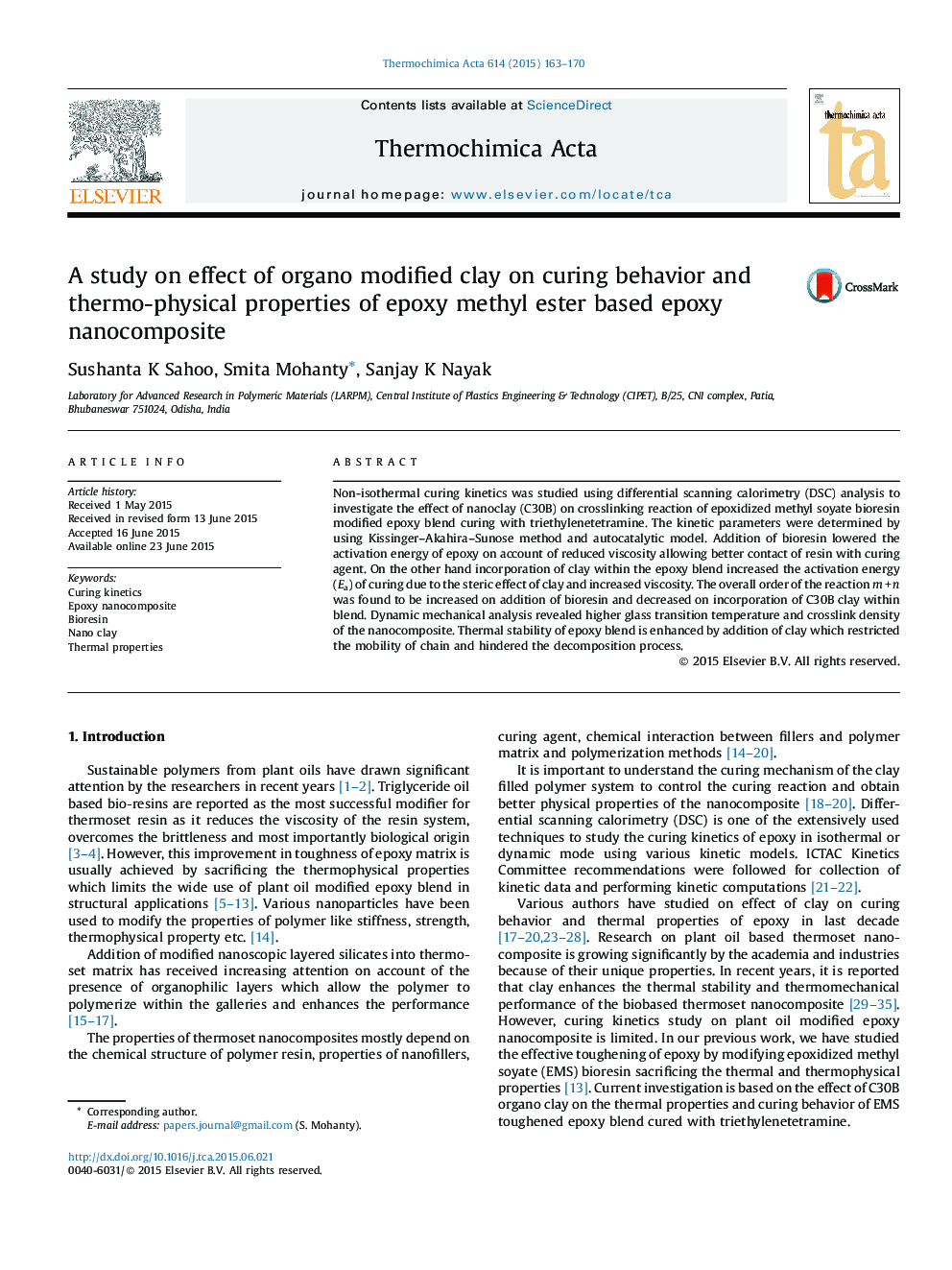| Article ID | Journal | Published Year | Pages | File Type |
|---|---|---|---|---|
| 672999 | Thermochimica Acta | 2015 | 8 Pages |
•Incorporation of epoxy methyl soyate bioresin in to the epoxy resin reduced the activation energy of curing.•Nanoclay enhanced the thermal stability and improved the damping behavior of bioresin modified epoxy blend.•Glass transition temperature and crosslink density of the nanocomposite is higher than base matrix.•Addition of C30B nanoclay in to the modified epoxy blend inhibited the curing process.•Kinetic parameters were determined by Kissinger–Akahira–Sunose and autocatalytic model.
Non-isothermal curing kinetics was studied using differential scanning calorimetry (DSC) analysis to investigate the effect of nanoclay (C30B) on crosslinking reaction of epoxidized methyl soyate bioresin modified epoxy blend curing with triethylenetetramine. The kinetic parameters were determined by using Kissinger–Akahira–Sunose method and autocatalytic model. Addition of bioresin lowered the activation energy of epoxy on account of reduced viscosity allowing better contact of resin with curing agent. On the other hand incorporation of clay within the epoxy blend increased the activation energy (Ea) of curing due to the steric effect of clay and increased viscosity. The overall order of the reaction m + n was found to be increased on addition of bioresin and decreased on incorporation of C30B clay within blend. Dynamic mechanical analysis revealed higher glass transition temperature and crosslink density of the nanocomposite. Thermal stability of epoxy blend is enhanced by addition of clay which restricted the mobility of chain and hindered the decomposition process.
Graphical AbstractFigure optionsDownload full-size imageDownload as PowerPoint slide
